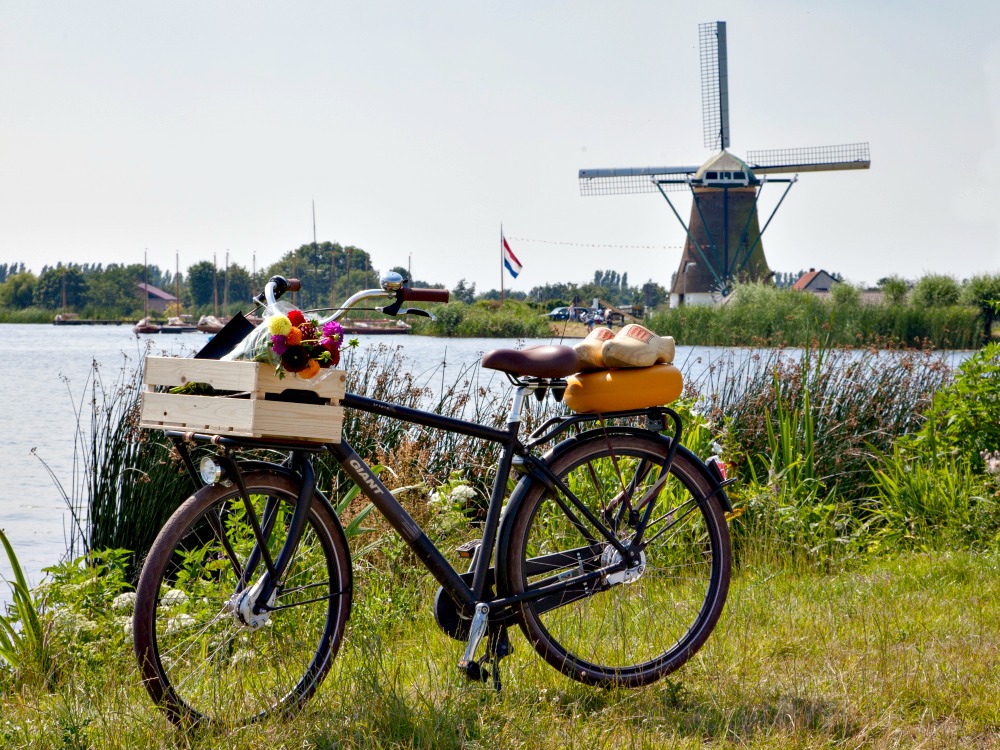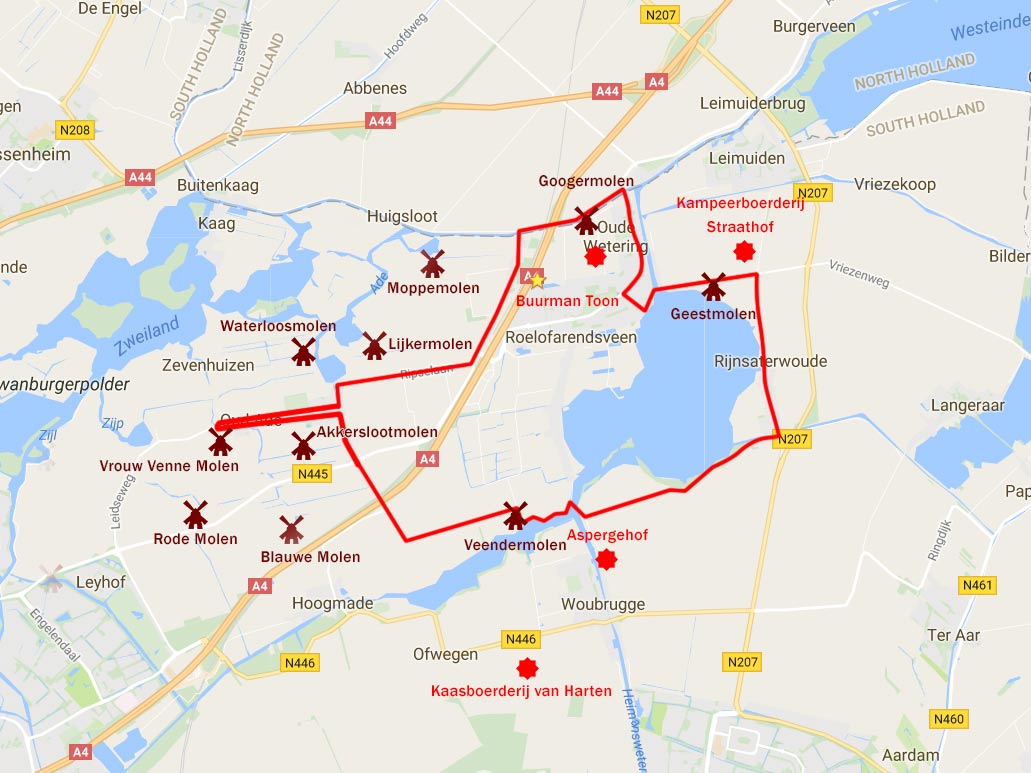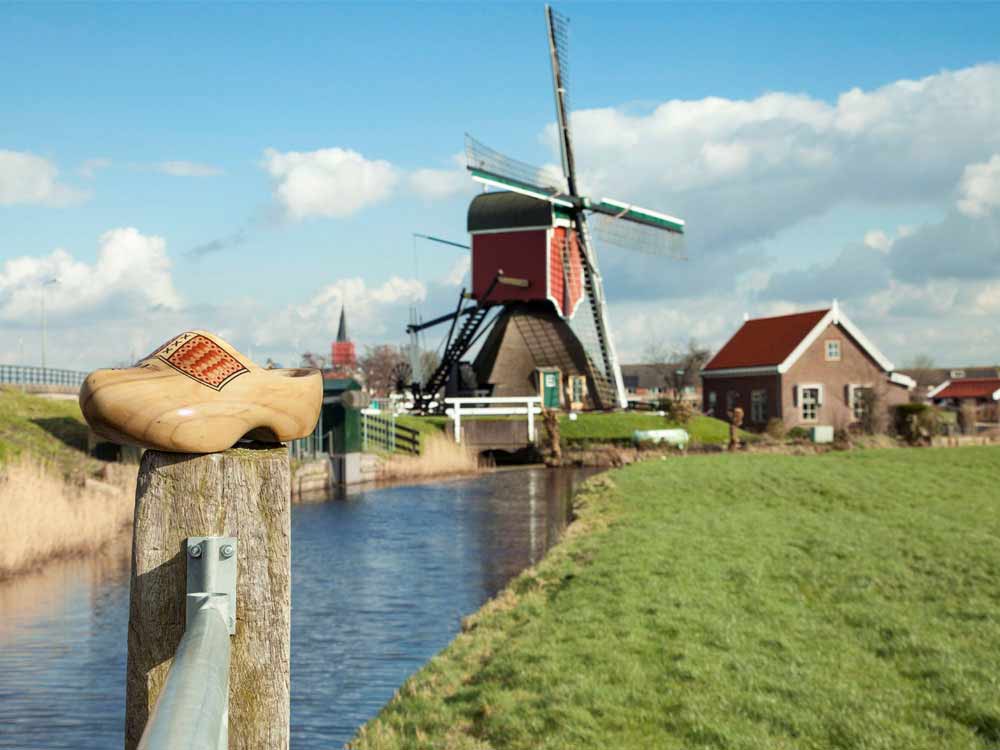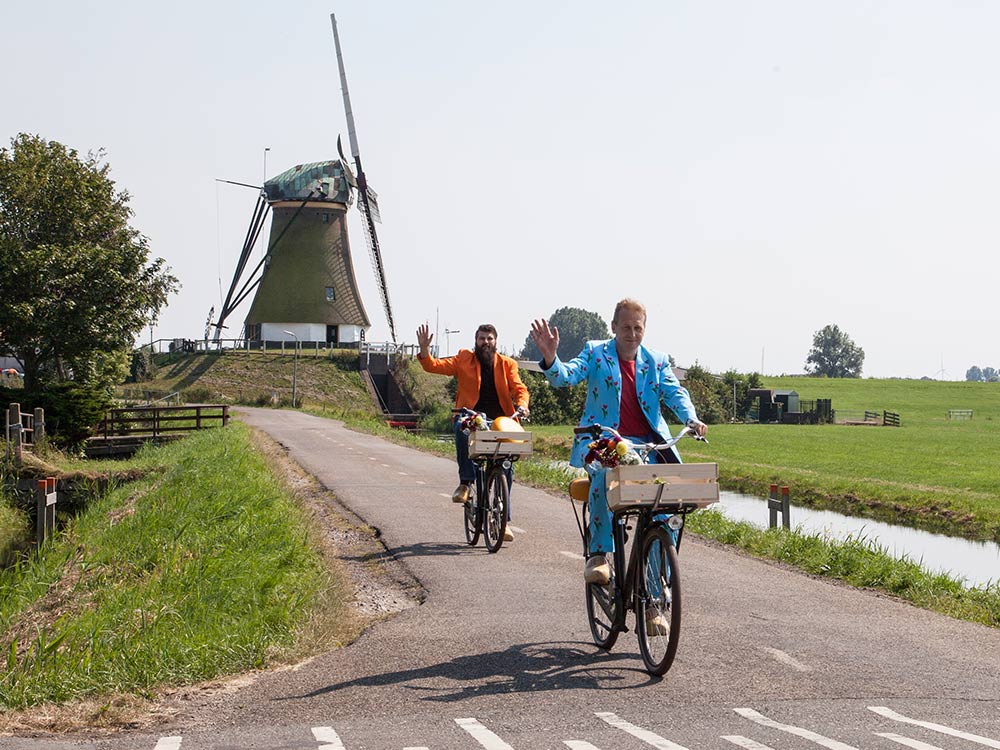Take the Dutch Windmill Bike Tour in Kaag en Braassem
Kaag en Braassem is a municipality south of Amsterdam. The area is known for its fields, lakes, and windmills. Everything you would expect from the Netherlands. The flat countryside, and excellent infrastructure makes it a good place to cycle, except on windy days! Take our Dutch Windmill Bike Tour and get a real dutch cycling experience.
Visit the lakes of Kaag en Braassem
The name Kaag en Braassem comes from the two lakes, the Kagerplassen, and the Braassemermeer. They are a popular place for watersport such as canoeing and sailing.
The countryside is mainly used for the production of Dutch flowers such as tulips, and for farming.
A great way to visit the area is by water. You can sail along the lakes or take the Tuliproute and learn all about the Dutch flower industry.
Cycling from windmill to windmill
Most of the windmills in this area were used for water management. Without them the area would still be a wet marsh. Many of the windmills are still fully functional, and even though most millers are volunteers or hobbyists, they get a call from the local government on wet and windy days, asking them to work the mills.
Kaag en Braassem Dutch Windmill Bike Tour
We made a bike tour for you, allowing you to cycle along some of the nicest scenery in Kaag en Braassem. You can choose your own starting point since the trail is a loop.
The tour is approximately 25 kilometers (15,5 miles) and takes 1,5 to 2 hours to finish.
Geestmolen - Heiligegeestlaan 6, Rijnsaterwoude
Built in 1707. This windmill is used for water management. Its location is at the braassemermeer. One of the lakes the municipality is named after.
Optional: Camping Farm Straathof - Willem van der Veldenweg 57, Leimuiden
This dairy farm is also a popular place to camp. It has a nice cafe where you can get a drink. The children can play in the hay shed. You can tap milk from a machine, unfiltered by the factory, it is very delicious. There sometimes is a big maze made in the corn fields. Check the straathof website for opening times and more information.
Ferry - Heiligegeestlaan, Rijnsaterwoude
Cycle and take the Ferry at the end of the Heiligegeestlaan. The ferry times change per season, so check the ferry website for more information.
Googermolen - Googermolenweg 1, Roelofarendsveen
The Googermolen was built in 1717. In 1833 the mill burned down because the brake overheated. Then it was rebuilt. During World War II, the polder flooded. The Googermolen was used to get rid of the water.
Optional: Dutch flowers at Buurman Toon - Baan 37, Oude Wetering
During the flower season you can pick your own flowers and grab a cup of coffee at Buurman Toon. This is a small greenhouse, where they show the traditional way of cultivating flowers. It is run by volunteers. If you are planning to stop by, check the Buurman Toon website or give them a call to see if they are open.
Moppemolen - Dwarsweg, Nieuwe Wetering
Built in 1752 and used for water management
Lijkermolen - Poeldijk 1, Rijpwetering
These two windmills were built around 1780. The miller of the Lijkermolen and the miller of the Akkerslootmolen had a ‘contest’ with another miller. Who could keep milling the longest with full sails and high wind velocities. The miller of the Lijkermolen lost.
Vrouw Vennemolen - Leidseweg 3, Oud Ade
This windmill was built in 1632 and rebuilt in 1835. One of the prettiest windmills of the municipality. A small residence is found in the lower part of the windmill. During World War II, many people listened to Radio Orange, the Dutch resistance Radio. The windmill did not yet have any electricity, but the windmill powered the battery of the radio.
Akkerslootmolen - Akkerslootpolder 7, Oud Ade
This round, stone windmill had no problems keeping the nearby polders dry. In the 70’s, a dam was built, and the windmill lost its function. Luckily, in 2000 the dams were removed, and the windmill went back into action.
Optional: De Rode Molen - Rode Polder, Oude Ade
If you cycle a little further, you can find De Rode Molen or The Red Windmill. The windmill was built in 1632. Most of these type of windmills have a wooden roof, but this one has a thatched roof.
Optional: De Blauwe Molen - Blauwemolenweg 10, Rijpwetering
De blauwe molen or the Blue Windmill is found a short distance from the red one. The names do not come from the color of the windmills even though the Red Mill is actually red. They are named after the two polders, De Rode Polder and De Blauwe Polder. The Blue windmill was built in 1772.
Veendermolen - Aderweg 3, Roelofarendsveen
This windmill is build upon the bottom part of a windmill from 1830. The reconstruction took place in 1934. Even though the windmill had been out of use for a while, when the electronic mill needed to be replaced in 2006, they decided to temporarily put the Veendermolen in full use.
Optional: Aspergehof Noordam - Boddens Hosangweg 63, Woubrugge
Visit the small farm shop at the asparagus farm. You can buy delicious delicacies from the local area. Check the Aspergehof website for opening times.
Optional: Kaasboerderij van Harten - Oudendijkseweg 4, Woubrugge
Cycle to the dairy farm and taste some of the local cheeses. There is a small shop where you can find all kinds of tasty cheeses. Check their Kaasboerderij van Harten website for opening times.
After that you can cycle through the small villages of Woubrugge and Rijnsaterwoude.
Optional: Visit the lake - Meerbon 1 - Rijnsaterwoude
Near Meerbon 1, you can park your bicycle. There are two small fence gates. The one on the right leads to small docks, and the one on the left leads to a tiny beach. Here you can have a picnic or take a dive in the water on a hot day.
Contact us to guide you around the Dutch Windmill Bike Tour
I hope you enjoy the Dutch Windmill Bike Tour. Of course you can cycle on your own, but you can also have us guide you around. Just contact us.
You may also be interested in our page about Dutch Windmills
Return from Dutch Windmill Bike Tour to Visit Windmills Holland
Return from Dutch Windmill Bike Tour to Around Amsterdam



